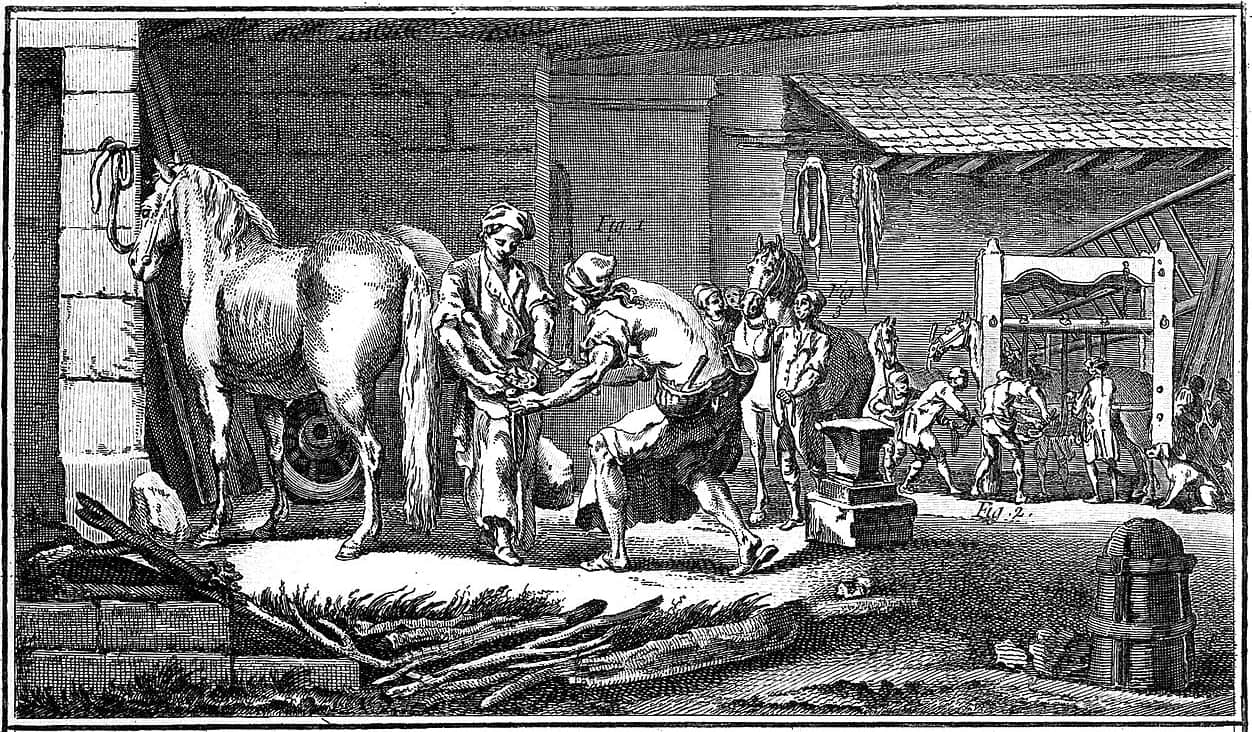
In HORSESHOER, the letters in the first half of the word are repeated in the second half in a different order.

In HORSESHOER, the letters in the first half of the word are repeated in the second half in a different order.
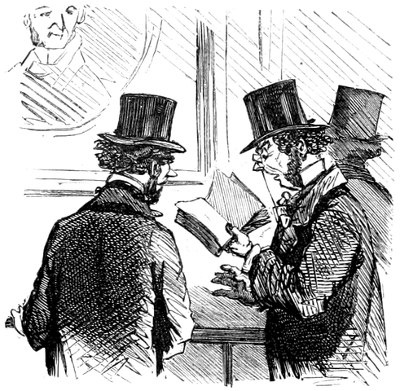
“You could compile the worst book in the world entirely out of selected passages from the best writers in the world.” — G.K. Chesterton
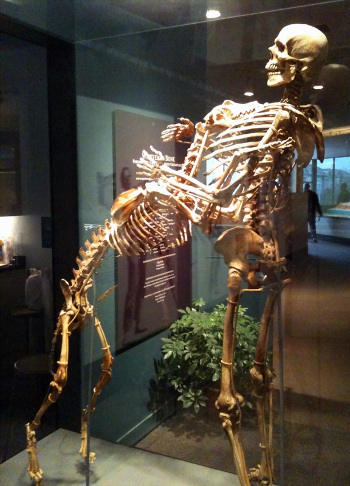
As Washington State University anthropologist Grover Krantz was dying of pancreatic cancer, he told his colleague David Hunt of the Smithsonian:
“I’ve been a teacher all my life and I think I might as well be a teacher after I’m dead, so why don’t I just give you my body.”
When Hunt agreed, Krantz added, “But there’s one catch: You have to keep my dogs with me.”
Accordingly, in 2003, Krantz’s skeleton was laid to rest in a green cabinet at the National Museum of Natural History alongside the bones of his Irish wolfhounds Clyde, Icky, and Yahoo.
Krantz’s bones have been used to teach forensics and advanced osteology to students at George Washington University.
And in 2009 his skeleton was articulated and, along with Clyde’s, displayed in the exhibition “Written in Bone: Forensic Files of the 17th Century Chesapeake.”
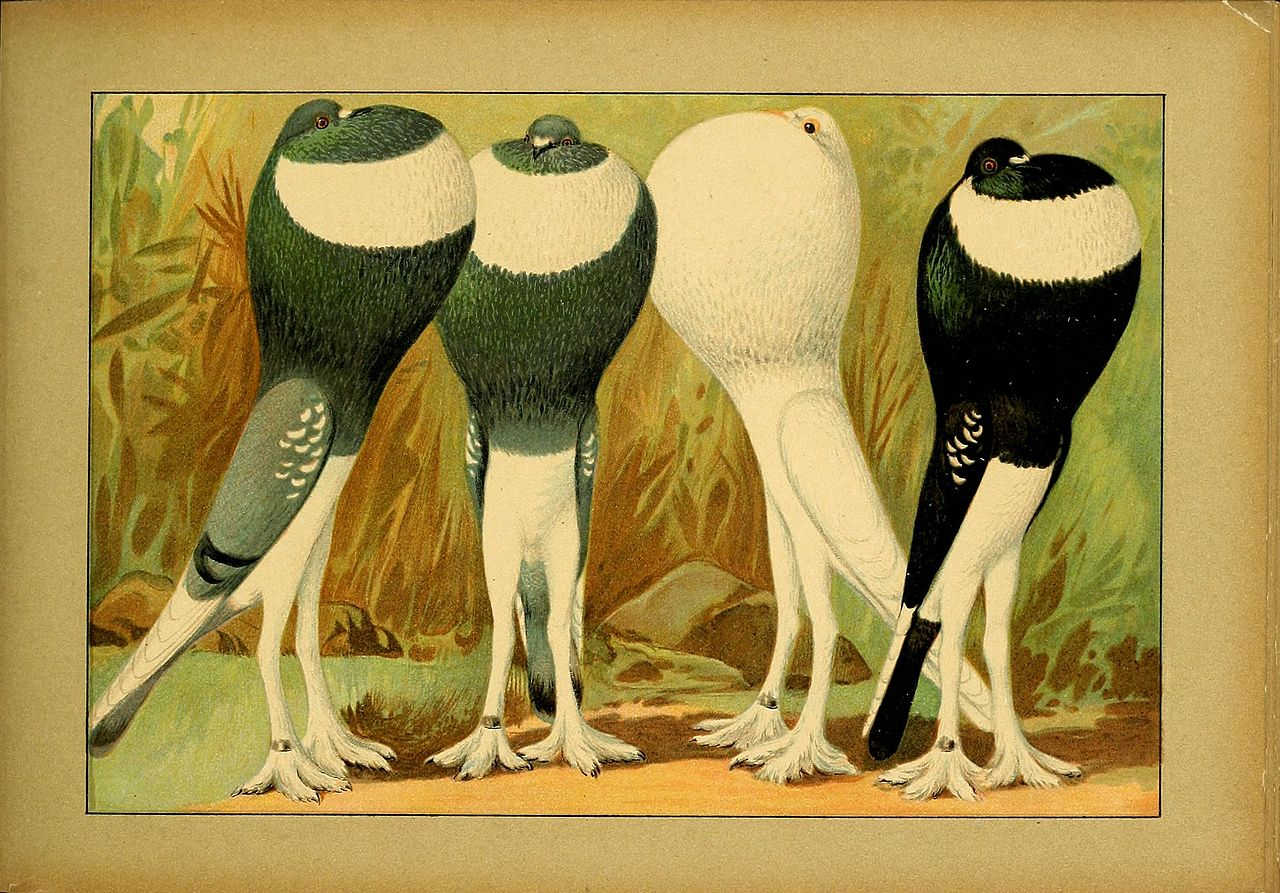
From a letter of Charles Darwin to Charles Lyell, April 1860:
I must say one more word about our quasi-theological controversy about natural selection, and let me have your opinion when we meet in London. Do you consider that the successive variations in the size of the crop of the Pouter Pigeon, which man has accumulated to please his caprice, have been due to ‘the creative and sustaining powers of Brahma?’ In the sense that an omnipotent and omniscient Deity must order and know everything, this must be admitted; yet, in honest truth, I can hardly admit it. It seems preposterous that a maker of a universe should care about the crop of a pigeon solely to please man’s silly fancies. But if you agree with me in thinking such an interposition of the Deity uncalled for, I can see no reason whatever for believing in such interpositions in the case of natural beings, in which strange and admirable peculiarities have been naturally selected for the creature’s own benefit. Imagine a Pouter in a state of nature wading into the water and then, being buoyed up by its inflated crop, sailing about in search of food. What admiration this would have excited — adaptation to the laws of hydrostatic pressure, &c &c For the life of me I cannot see any difficulty in natural selection producing the most exquisite structure, if such structure can be arrived at by gradation, and I know from experience how hard it is to name any structure towards which at least some gradations are not known.
Ever yours,
C. Darwin.
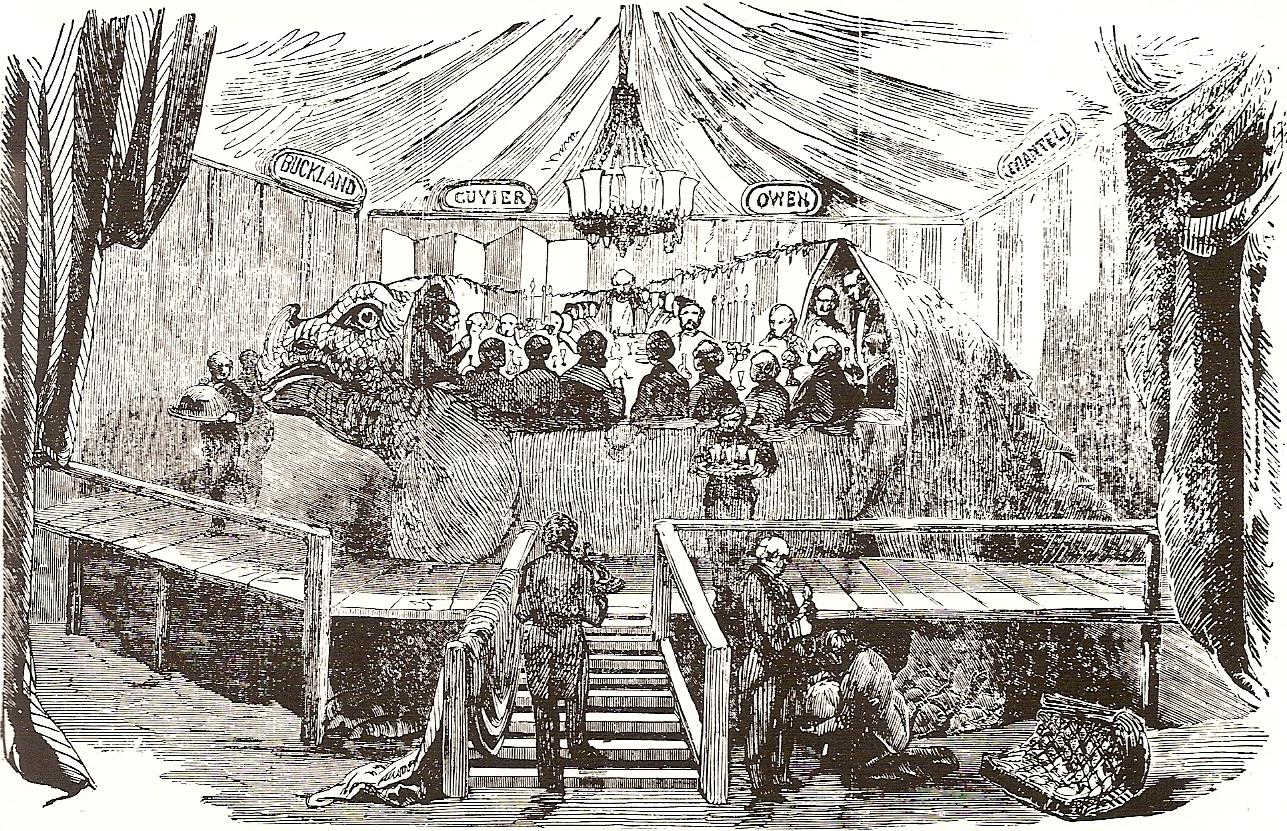
In 1852, British artist Benjamin Waterhouse Hawkins engaged to make 33 life-size concrete models of extinct dinosaurs, to be arranged in a park in southern London around the relocated Crystal Palace. Throughout the work he conferred with a team of leading British scientists, and on New Year’s Eve 1853 they celebrated their accomplishment with a dinner party held inside one of the sculptures:
Twenty-one of the guests were accommodated with seats ranged on each side of the table, within the sides of the iguanodon. Professor Owen, one of the most eminent geologists of the day, occupied a seat at the head of the table, and within the skull of the monster. Mr. Francis Fuller, the Managing Director, and Professor Forbes, were seated on commodious benches placed in the rear of the beast. An awning of pink and white drapery was raised above the novel banqueting-hall, and small banners bearing the names of Conybeare, Buckland, Forbes, Owen, Mantell, and other well-known geologists, gave character and interest to the scene. When the more substantial viands were disposed of, Professor Owen proposed that the company should drink in silence ‘The memory of Mantell, the discoverer of the iguanodon,’ the monster in whose bowels they had just dined.
They concluded with a “roaring chorus” in praise of the “antediluvian dragon”:
A thousand ages underground
His skeleton had lain;
But now his body’s big and round,
And he’s himself again!
His bones, like Adam’s, wrapped in clay,
His ribs of iron stout,
Where is the brute alive to-day
That dares with him turn out?
Beneath his hide he’s got inside
The souls of living men,
Who dare our Saurian now deride
With life in him again?
(Chorus) The jolly old beast
Is not deceased,
There’s life in him again. (A roar.)
In fairy land are fountains gay,
With dragons for their guard:
To keep the people from the sight,
The brutes hold watch and ward!
But far more gay our founts shall play,
Our dragons, far more true,
Will bid the nations enter in
And see what skill can do!
For monsters wise our saurians are,
And wisely shall they reign,
To spread sound knowledge near and far
They’ve come to life again!
Though savage war her teeth may gnash,
And human blood may flow,
And foul ambition, fierce and rash,
Would plunge the world in woe,
Each column of this palace fair
That heavenward soars on high,
A flag of hope shall on it bear,
Proclaiming strife must die!
And art and science far shall spread
Around this fair domain,
The People’s Palace rears its head
With life in it again.
(From Routledge’s Guide to the Crystal Palace and Park at Sydenham, 1854.)
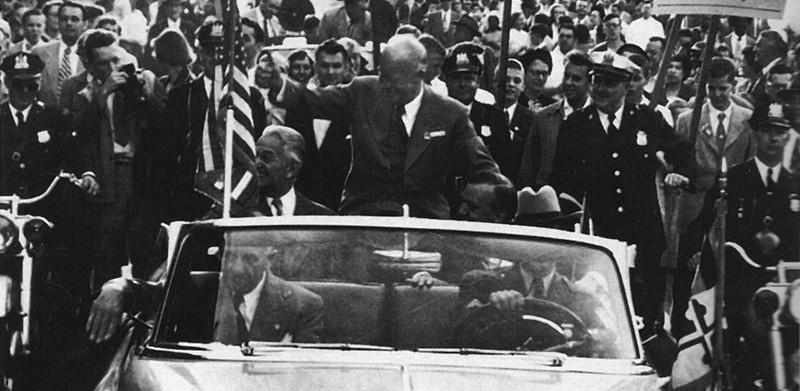
In September 1952, when Dwight Eisenhower found himself campaigning against the eloquent Adlai Stevenson, Time magazine made a list of his incomprehensible utterances:
“In our efforts throughout the world, on outpost positions, I mean positions that are exposed to immediate Communist threat, physical threat, if we will help those people hold out and get ourselves back where we belong as reserves to move in to any threatened danger point if they carry it to that point, carry it to that level, then what we will be doing it will be taking these 22 million South Koreans, pushing programs for getting them ready to hold their own front line.”
“I had some service friends that came to me along about May and some things beat around my head, and asked me, ‘General, why are you so crazy to ever get into this kind of thing?’ I had to find some answer that was quick because I was pretty busy in Europe. I got a picture of my three grandchildren and I put it on my mantel and I said, ‘Look at that.’ I want to talk about the future for a second in their terms. This is my particular philosophy. We have been talking about social gains for all our people in terms of, first, political issues, and secondly as of goals in themselves. Now I reject both doctrines, both ideas.”
“We are not going to let our citizens, through no fault of their own, fall down into disaster they could not have foreseen and due to the exigencies of our particular form of economy, this modern economy where they have no power to keep themselves out of that.”
Arnold Roth observed, “The man who had commanded the greatest army in history seemed to have inadequate command of his own thoughts, or at least the vehicle by which he carted those thoughts into public view.”
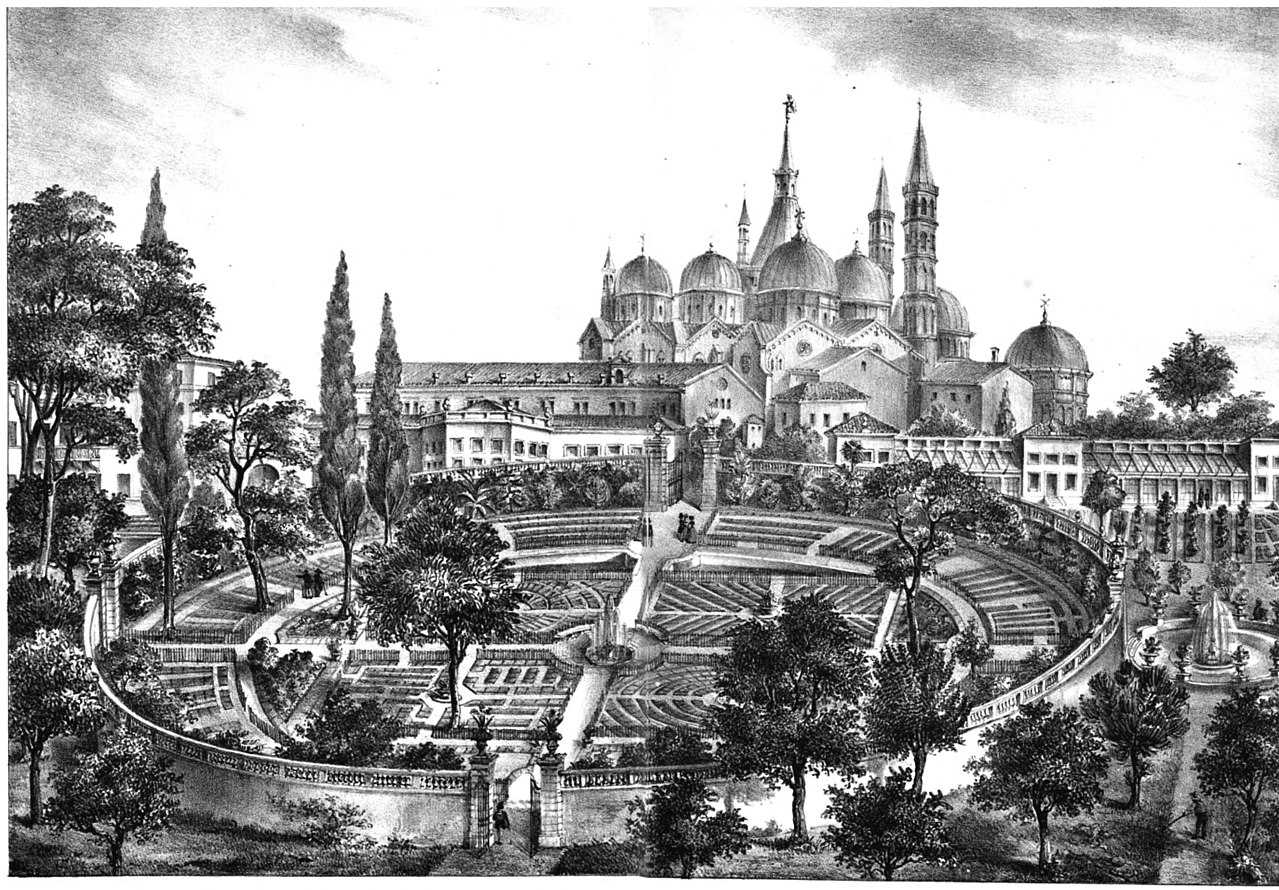
“Is not every garden a botanical garden?” — Samuel Johnson

In this week’s episode of the Futility Closet podcast we’ll explore some more curiosities and unanswered questions from Greg’s research, including a misplaced elephant, a momentous biscuit failure, a peripatetic ax murderer, and the importance of the 9 of diamonds.
We’ll also revisit Michael Malloy’s resilience and puzzle over an uncommonly casual prison break.
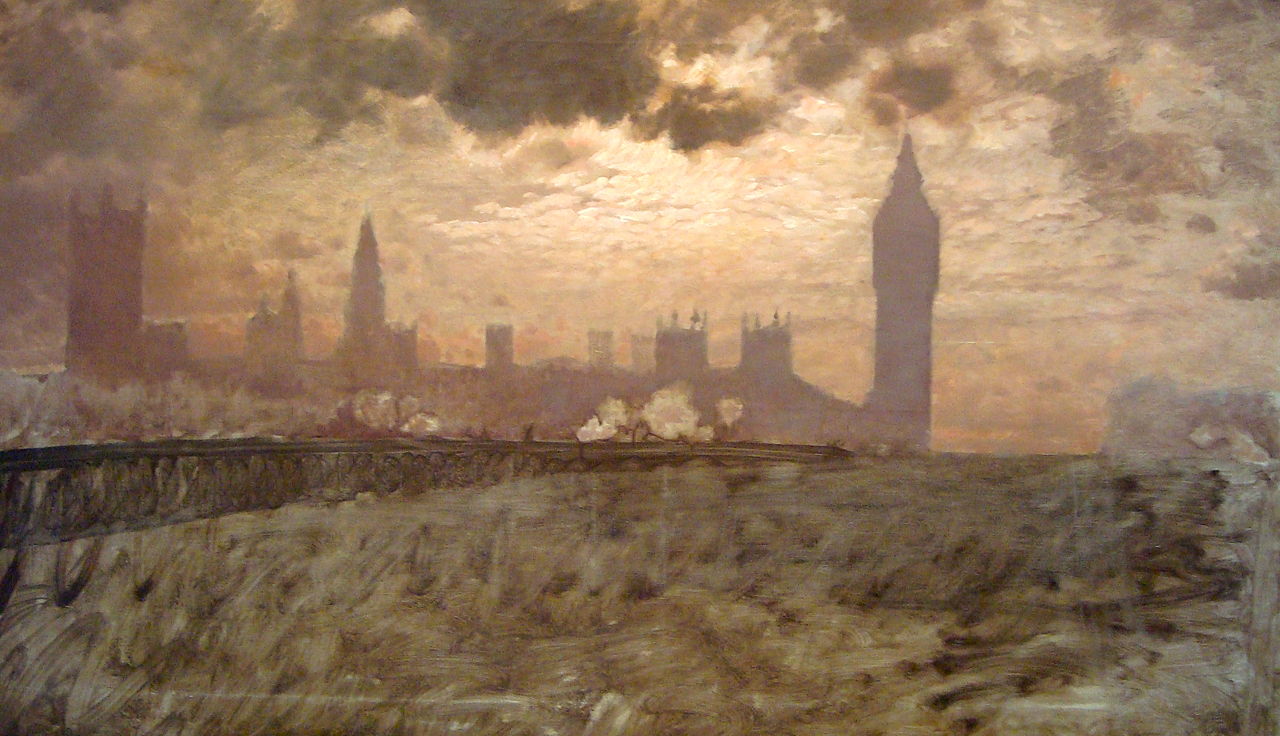
“Westminster Quarters,” the clock chime melody associated most closely with Big Ben, consists of four notes played in a characteristic permutation at each quarter of the hour:
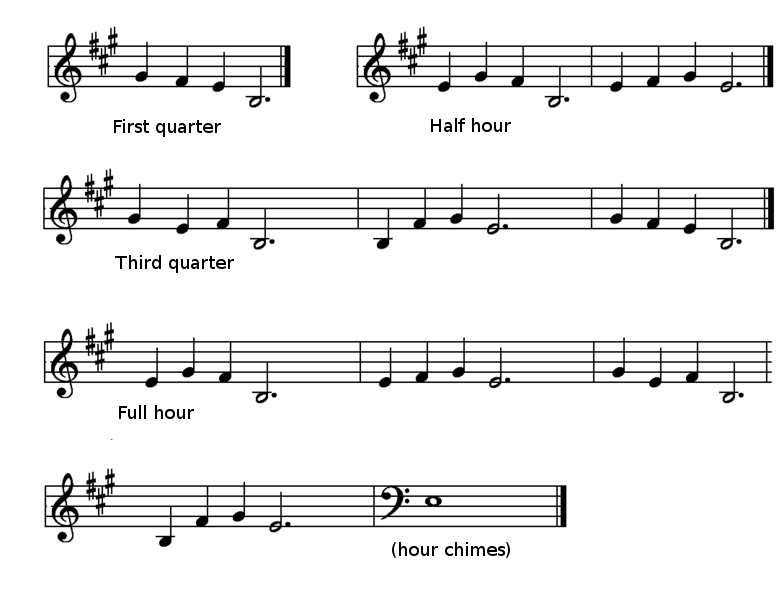
In 1933 composer Ernst Toch fled Germany for London, where one foggy night he was crossing Westminster Bridge and heard the familiar chimes strike the full hour. He wrote:
The theme lingered in my mind for a long while and evolved into other forms, always somehow connected with the original one. It led my imagination through the vicissitudes of life, through joy, humour and sorrow, through conviviality and solitude, through the serenity of forest and grove, the din of rustic dance, and the calm of worship at a shrine; through all these images the intricate summons of the quarterly fragments meandered in some way, some disguise, some integration; until after a last radiant rise of the full hour, the dear theme, like the real chimes themselves that accompanied my lonely walk, vanished into the fog from which it had emerged.
On the boat to New York he wrote Big Ben: Variation-Fantasy on the Westminster Chimes:
(From Chris McKay, Big Ben, 2010.)
06/04/2018 The chimes also inspired Louis Vierne’s 1927 organ piece Carillon de Westminster. (Thanks, Jon.)

The familiar posture of victory — raising the arms, tilting the head back, and expanding the chest — appears to be hard-wired into the human brain, probably because it was a universal sign of dominance in our ape ancestors.
In 2008, psychologists Jessica Tracy and David Matsumoto compared the expressions and body language of sighted, blind, and congenitally blind judo competitors representing more than 30 countries in the 2004 Olympic and Paralympic Games. They found that the blind athletes used the same gestures as their sighted peers, even though they’d never seen anyone else use them.
“Since congenitally blind individuals could not have learned pride and shame behaviours from watching others, these displays of victory or defeat are likely to be an innate biological propensity,” Tracy told the Telegraph.
The same victory gesture is seen in children as young as 3. Tracy said she was studying similar behaviors in chimps and that “anecdotal evidence mentioned in the paper suggests that, yes, the human pride and shame displays are very similar to non-human displays of dominance and submission, seen in a wide range of animals.”
(Jessica L. Tracy and David Matsumoto, “The Spontaneous Expression of Pride and Shame: Evidence for Biologically Innate Nonverbal Displays,” Proceedings of the National Academy of Sciences 105:33 [August 19, 2008], 11655-11660.)